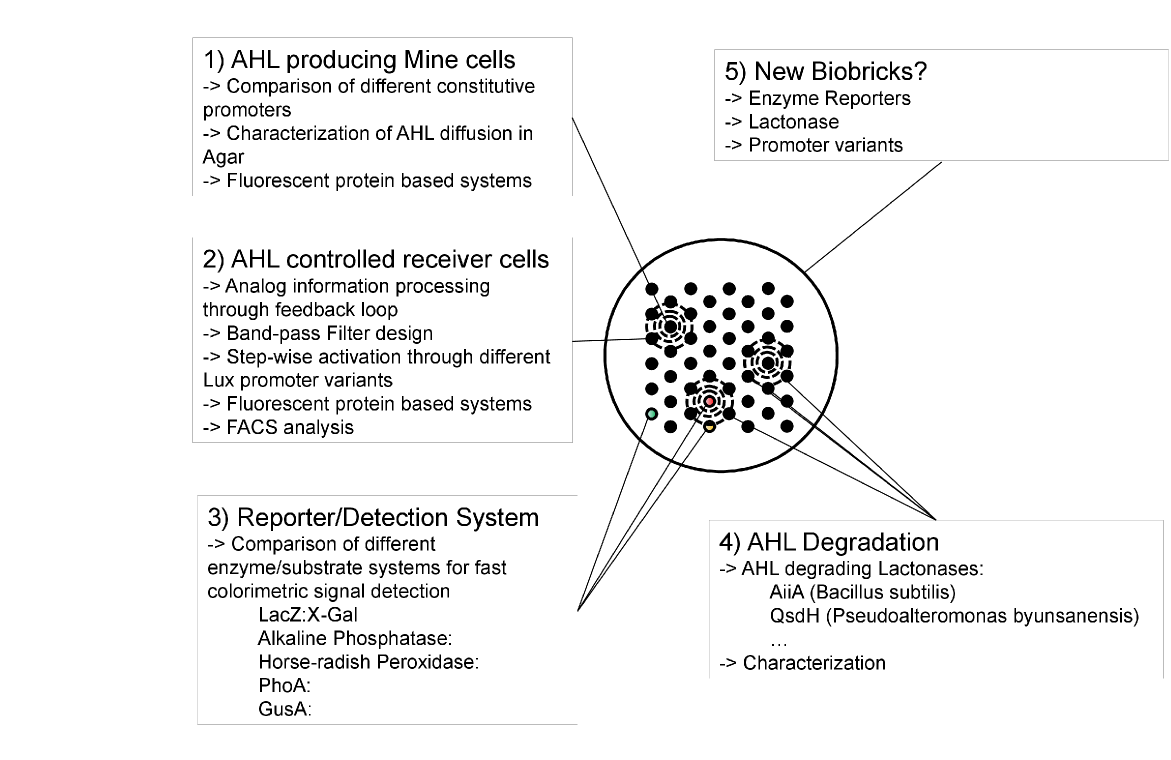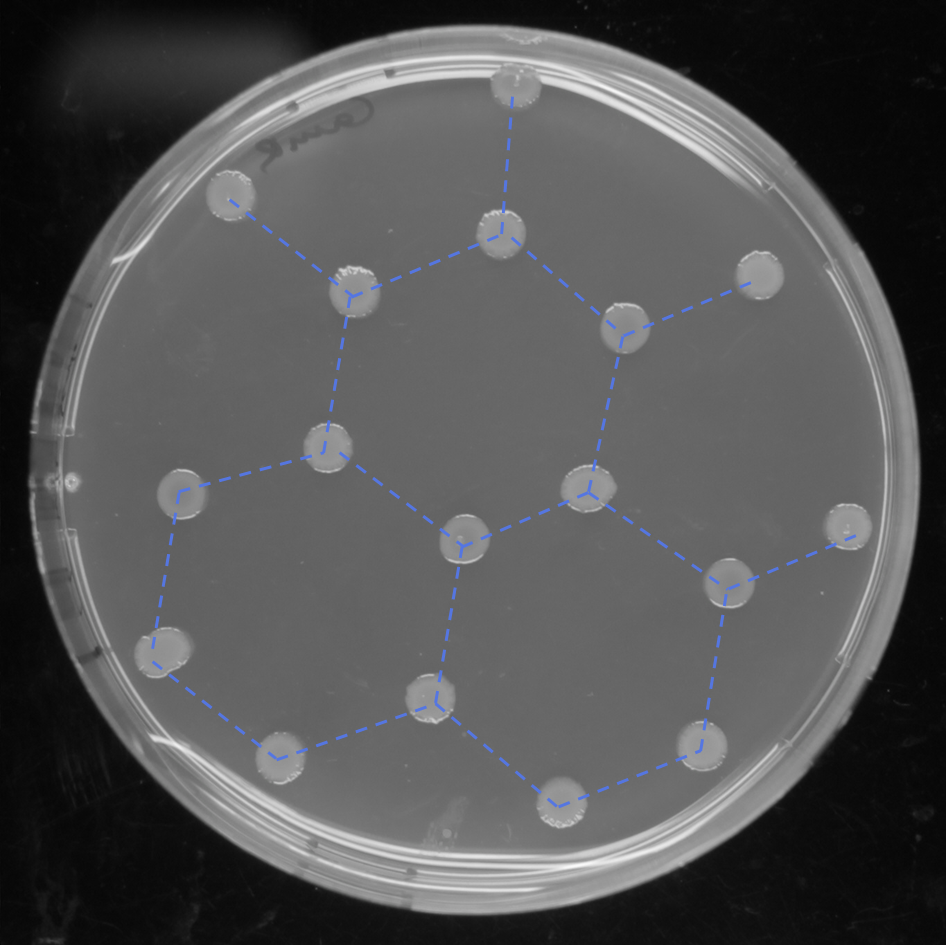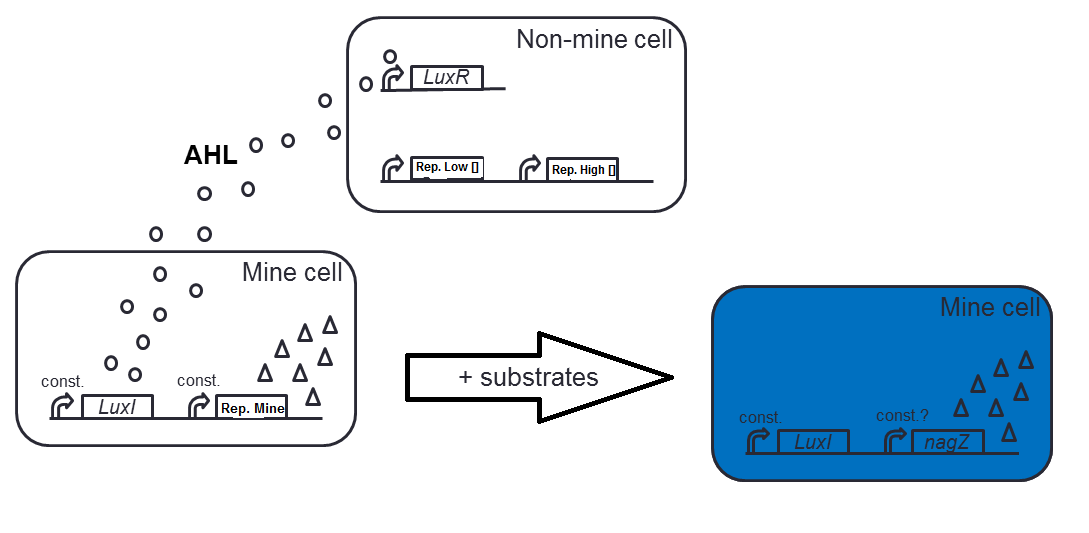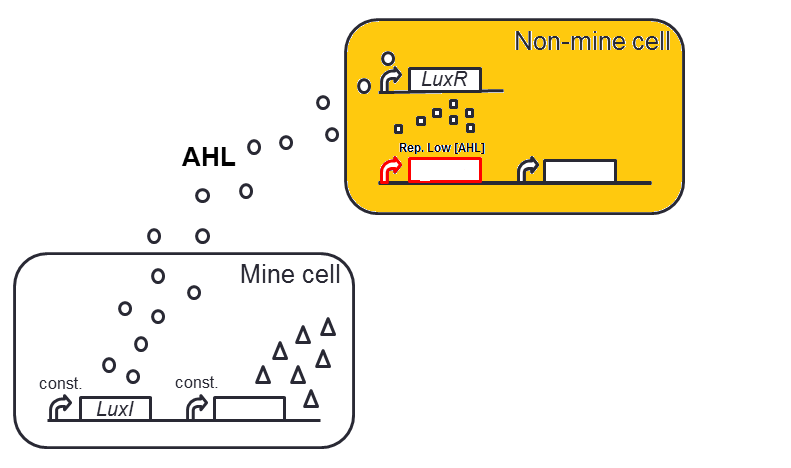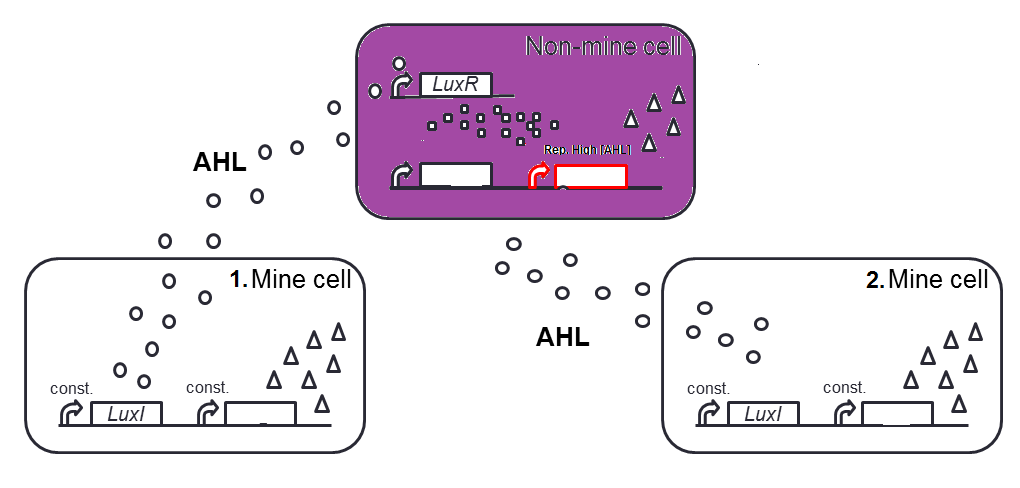Team:ETH Zurich/Project
From 2013.igem.org
Contents |
So... how to play Colisweeper?
Not difficult at all! As long as you know the basic rules of the traditional minesweeper. Each field can be one of three different things:
1. a boring non-mine cell, which we don't really care much about,
2. a helpful non-mine cell, which we like a lot, because it tells us how many mines are close by
3. a dangerous and scary mine cell itself, which we can't reveal until the veeery end of the game or else we are blown up into little pieces and lose.
As a little helper, we also have the flagging option - if we're sure a field is a mine, we can mark it with a flag to not blow it up on accident.And what's the goal? To find all the scary mines as fast as possible - after all, noone likes an unexpected explosion right under their feet.
Colisweeper works just like that as well! To imitate the "click" of a mouse on a computer, we add a substrate to the cell of our choice and that way we start a reaction or express a reporter.
You're ready to sweep already, baby!
But let's have a closer look if you want to know how our bacteria play the game...
The set up
The simplest set up is to place E.coli colonies on an M9 agar plate in a certain pattern.
But how to choose the right pattern ?
The more intuitive way is to use the classic minesweeper pattern with squares, plating the colonies in the corner of the sqaures. The problem is we are working with the diffusion of Acylated homoserine lactones (AHL) therefore the colonies must be at the same distance. But in this pattern if we consider one colony X, 4 colonies will be at a distance 1, and 4 colonies will be at a distance √2.We would not be able to simulate correctly the indication of mines around.
Finally the hexagonal honeycomb like pattern seems to be perfectly adapted for our use because every intersection and centre of the hexagons are at the same distance to the colonies around them.
Mine cells / Sender cells
On the one hand the mine cells are constitutively expressing the "mine cell" reporter reacting with the substrate to the visible result of being a mine.
On the ohter hand the mine cell is a sender module of Acylated homoserine lactones for quorum sensing of the neighbouring colonies.
The LuxI preceded by a constitutive promoter induces AHL expression.
AHL expression level and diffusion has to be characterized during independent experiments to know about the diffusion speed and time to wait before playing.
Let's have a look what happens with the expressed AHL.
Non mine cells/Cells neighbouring mine cells
Receiver cell response to low AHL concentration
If one mine cell is close to the colony which is selected with substrate, the AHL concentration induces different reporter possibilities.Thanks to a band pass filter using the LuxR system the cell is able to detect low concentrations of AHL and activate a reporter signalling low AHL concentration.
The Gamer knows that 1 mine is close to the mine he just revealed.
Receiver cell response to high AHL concentration
Consider two or more mine cells producing AHL surround the selected colony, the AHL concentration is higher, the LuxR system working as band pass filter induces the expression of an other reporter to to show that 2 or more mines are surrounding the selected colony.
The goal to achieve is that the player exactly knows how many mines are in the surrounding.
Non mine cells
Non mine cells not sensing the presence of mine cells because they are to far away are also working with the LuxR bandpass system and express a reporter indicating that this is a "neutral" cell
Flagging option
If the player is sure about one colony to be a mine he has the option to flag it as a visual help.This is achieved by E.coli expressing constitutively a reporter reactng to a seperate substrate in order to flag the colony without revealing any information about mine, non mine or neighbouring cells.
 "
"


